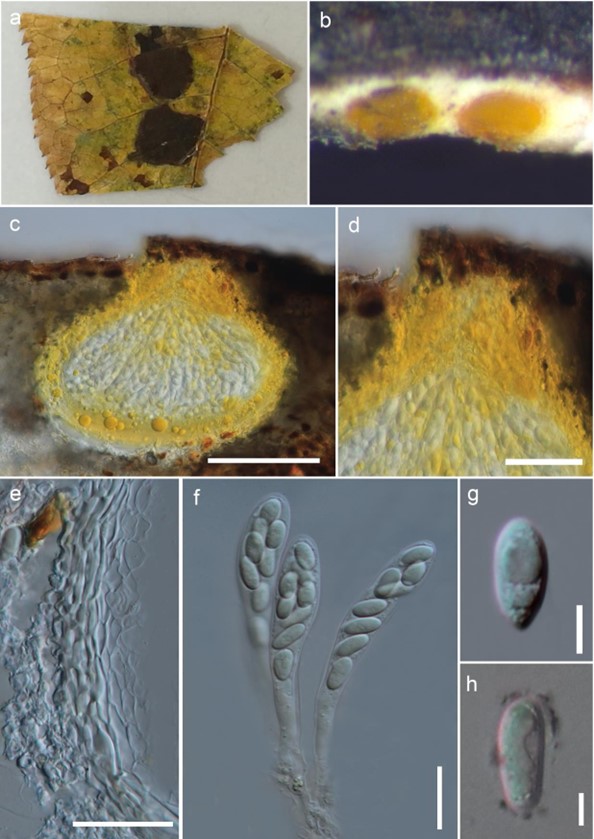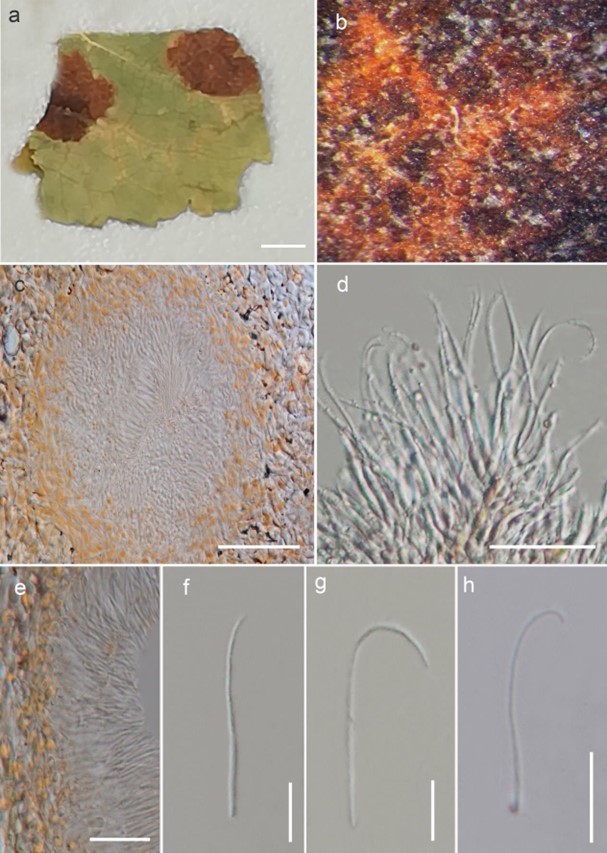Polystigma DC., Fl. franç., Edn 3 (Paris) 5/6: 164 (1815)
Index Fungorum number: IF 4324; MycoBank number: MB 4324; Facesoffungi number: FoF 03519; 20 morphological species (Species Fungorum 2020), 3 species with sequence data.
Type species – Polystigma rubrum (Pers.) DC.
Notes – Polystigma is the type genus of Polystigmataceae, established by Lamarck & de Candolle (1815). It is a small genus, parasitic mainly to Prunus, with almost all of the species reported with both asexual and sexual morphs (Cannon 1996). The generic name of Polystigma has been recommended for use instead of the usually associated additional names, Polystigmina and Rhodoseptoria since it contains a greater number of species. Five taxa of Polystigmina are already synonyms of Polystigma rubrum while the type species of Rhodoseptoria is a synonym of Polystigma rubrum (Réblová et al. 2016b). Suzuki et al. (2008) reported Polystigmina pallescens as the asexual state of Polystigma fulvum.

Figure 1 – Polystigma fulvum (Material examined – BELARUS, Minsk region, Maladzyechna District, Sychevichi Village, near children’s health camp “Brigantina”, deciduous forest on Prunus padus (Rosaceae), 15 Oct. 2017, A.K. Khramtsov T-2083, MFLU 18-0261). a Swollen leaf spots on Prunus padus L. b Close-up of ascomata. c Vertical section through ascoma. d Close-up of inconspicuous ostiole. e Peridium of ascoma. f Asci. g Ascospore. h Faint sheath around ascospore. Scale bars: a = 200 μm, c = 50 μm, d, f = 50 μm, e = 20 μm, g, h = 5 μm.

Figure 2 – Polystigma rubrum (Material examined – RUSSIA, Rostov region, Shakhty City, Cotton fabric microdistrict, torn shrubs near Grushevka river on Prunus stepposa Kotov., 9 October 2017, Timur S. Bulgakov, T-2093, MFLU 18-0271). a Swollen leaf spots on Prunus stepposa K. b Close-up of leaf spots. c Vertical section through conidioma. d Conidiogenous cells and developing conidia. e Conidiomatal wall. f-h Conidia. Scale bars: a = 200 μm, c = 50 μm, d-h = 10 μm.
Species
Polystigma rubrum
